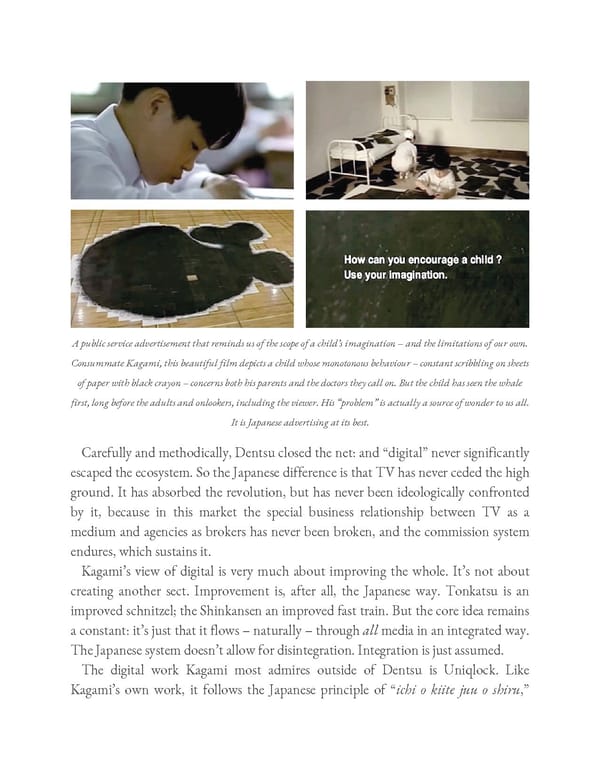A public service advertisement that reminds us of the scope of a child’s imagination – and the limitations of our own. Consummate Kagami, this beautiful film depicts a child whose monotonous behaviour – constant scribbling on sheets of paper with black crayon – concerns both his parents and the doctors they call on. But the child has seen the whale first, long before the adults and onlookers, including the viewer. His “problem” is actually a source of wonder to us all. It is Japanese advertising at its best. Carefully and methodically, Dentsu closed the net: and “digital” never significantly escaped the ecosystem. So the Japanese difference is that TV has never ceded the high ground. It has absorbed the revolution, but has never been ideologically confronted by it, because in this market the special business relationship between TV as a medium and agencies as brokers has never been broken, and the commission system endures, which sustains it. Kagami’s view of digital is very much about improving the whole. It’s not about creating another sect. Improvement is, after all, the Japanese way. Tonkatsu is an improved schnitzel; the Shinkansen an improved fast train. But the core idea remains a constant: it’s just that it flows – naturally – through all media in an integrated way. The Japanese system doesn’t allow for disintegration. Integration is just assumed. The digital work Kagami most admires outside of Dentsu is Uniqlock. Like Kagami’s own work, it follows the Japanese principle of “ichi o kiite juu o shiru,”
 Ogilvy on Advertising in the Digital Age Page 369 Page 371
Ogilvy on Advertising in the Digital Age Page 369 Page 371